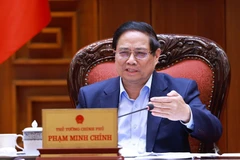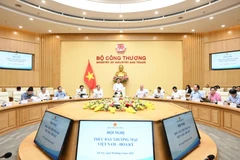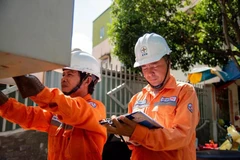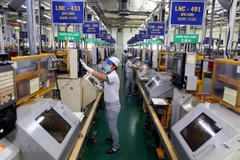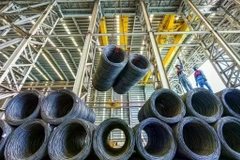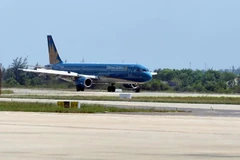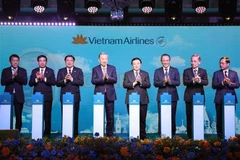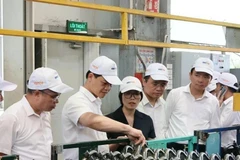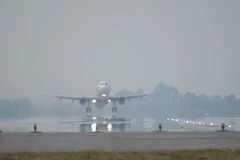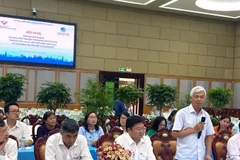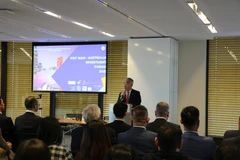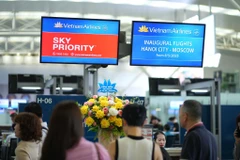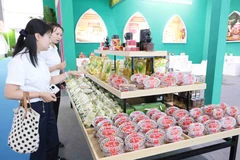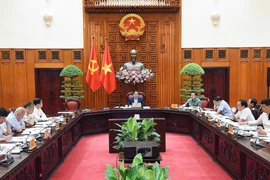Rising export turnover in recent years and the trade surplus achievedlast year shows that there is potential opportunity for the growth ofthe logistics industry, experts have said.
Deputy Minister ofIndustry and Trade Tran Tuan Anh told participants at Vietnam LogisticsForum 2013 in HCM City on November 15 that last year the country'simport-export value was 228 billion USD, up 12.4 percent over 2011.
Of the amount, exports exceeded $114 billion, outpassing imports 750 million USD.
"This year exports are expected to rise 14.3 percent to 141 billionUSD and imports 15.6 percent to 131.4 billion USD, and the strong tradeactivity development has highlighted the important role of logistics,"said the deputy minister.
Vietnam has entered eight bilateraland multilateral economic agreements while another six are undernegotiations, and these agreements aim at free trade, thus providingopportunity for the industry.
According to Dr Bui Thien Thu,deputy head of the Vietnam Maritime Administration, Vietnam 'slogistics businesses have managed to provide insurance and transportservices to 18 percent of the country's total imports and exports.
Currently, up to 90 percent of Vietnam 's imports and exports aredelivered by sea and the growth rate of container shipments was 17percent a year between 2001 and 2010.
By 2015Vietnam 's seaport throughput is expected to reach 400 million tonnes,680 million tonnes by 2020, and more than 1.1 billion tonnes in 2030.
Logistics costs remain high, weakening the competitiveness of serviceusers, said experts at the forum organised by the Thoi Bao Kinh TeVietnam (Vietnam Economic Times).
Deputy Minister Tran Tuan Anhsaid logistics costs in Vietnam represent 25 percent of thecountry's GDP, while the rate is 11-13 percent in developed countriesand 15-20 percent in other developing countries.
"Reducing thecosts will surely help our economy improve its competitiveness in anintegrated environment where competition has become fierce," he said.
On the issue, he said factors including infrastructure, legal framework and services providers, should be considered.
"We have spent a large amount from the State budget and ODA sources oninfrastructure development to facilitate goods transportation andlogistics service development. Our seaport systems have been built at alarge scale and with modern handling equipment," he said.
"However a problem remains: the poor connection with goods areas, which needs improvement," he said.
He also wants logistics related regulations to be updated to match current realities.
Meanwhile, domestic service providers have a lack of skills, networks and capital to invest in advanced technology.
Do Xuan Quang, chairman of the Vietnam Logistics Association,suggested that logistics companies should have a deep understanding oftrade like payment and insurance regulations as well as tariffincentives from Free Trade Agreements to support importers andexporters.
"On their part, importers and exporters should knowabout freight forwarding, transportation and other logistic services aswell as trade agreements that Vietnam has concluded so they andlogistics companies will be able to support each other, and thus improvetheir competitiveness," said Quang.
He furtherproposed the establishment of a State management organisation and anational logistics committee to guide the operations of logistics firms,both local as well as foreign.
The organisation would beexpected to act as a bridge between businesses and the State in mappingout strategies, policies and action programmes for the growth of thelogistics industry.
This in turn would help the country's trade and production development, he said.-VNA

